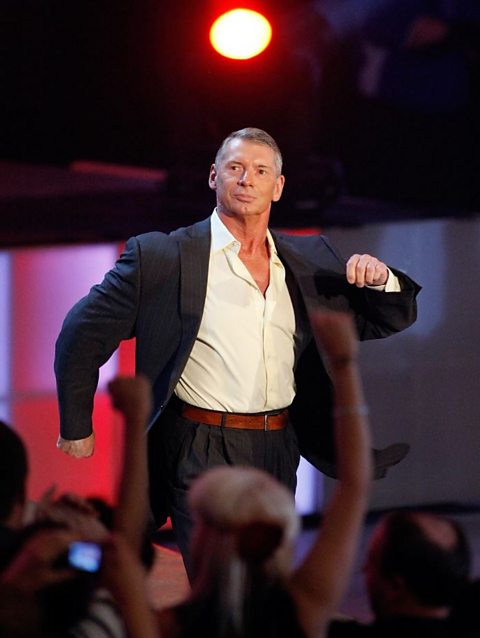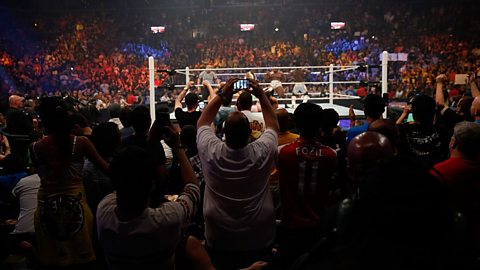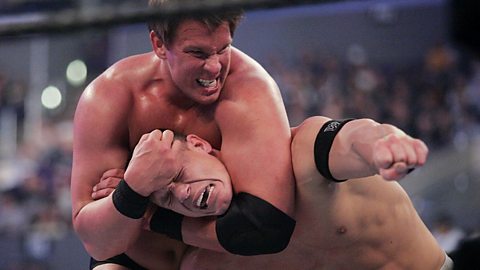The imminent return of GLOW makes manifest just how much the world loves wrestling.
Whether itтs the т80s retro stylings of the hit Netflix series or the continued success of the WWE stars who tour the globe with their pro shows, there is an appetite for some heightened grappling in Lycra.
If youтre a newbie, perhaps only just dipping a toe into the first season of the Gorgeous Ladies of Wrestling and their adventures before the newest lands on Friday, hereтs a guide to the terms you may come across. Just remember not to make anyone say kayfabe - and definitely donтt be a heel.
Babyface
Also known as simply тFaceт or тBabyт, these are the good guys in the ring and usually the one the crowds are cheering for. John Cena, the breakout wrestling star who combines his success in the ring with TV presenting and appearances in movies such as Trainwreck and Daddyтs Home is a prime example of a babyface.

Wrestling is an intriguing world, however, and itтs not uncommon for some stars to lose their babyface credentials and slip over to the тdarkт side. Itтs then that they become aтІ

Heel
The yin to the babyfaceтs yang, a heel is not the sort of wrestler youтd take home for tea with your nan. As the baddie, theyтre just as important a part in the story of a wrestling match as Skeletor is to He-Man, because basically, the crowd needs someone to boo, panto-style.
Although The Rock, arguably the best-known wrestler of all time and now a successful movie star, would seem a prime candidate to be classed as a babyface, he has time-served on his CV as a heel. The moment when he went from a crowd hero to a villain occurred in in the late '90s and is known as a тheel turnт, although he eventually came back to being on the side of the people. Phew.
Other famous heels not heading to your granтs house anytime soon include Randy Orton and Vince McMahon.
And just for the record, if you fall somewhere between the camps of babyface and heel in your pro-wrestling career, consider yourself a tweener.

Kayfabe
Some wrestling jargon has its origins in carnival-speak, or тcarnyт, the coded language that people in travelling fairs and circuses would use around outsiders to stop them learning any of the tricks of the trade.
With pro-wrestling existing in the same entertainment bubble as the circus world, there are moments when they share terminology. Kayfabe is one of them.
Kayfabe means fake and anyone from withing the wrestling world who reveals its secrets to an outsider, is тbreaking kayfabeт. Itтs also a handy term for wrestlers to use among each other when theyтre wary of strangers from outside the business getting too close to a conversation and serves as a handy warning to change the subject.
Mark
Going back further than the days when pro-wrestling entertained audiences of millions around the world, a mark was someone who fell foul to a con artistтs trick.
In a wrestling audience a mark is - well, how we can say it without being a spoilsport? - somebody who takes every throw, slam, in-ring confrontation and eventual match victory as a 100% genuine achievement based solely on skill and athleticism.

Although once used in an unpleasant way to pinpoint someone gullible, itтs become a more positive term in recent years, to describe a keen supporter of a particular star. For example, anyone who is a massive fan of John Cena is one of his marks.
Blading
They donтt tell you about this one on the telly. In order to give pro-wrestling a little extra realism, participants have been known to hide a small blade on their person. Never for violent use against their opponent, itтs more to nick themselves in a relatively safe place (ie, their forehead), to produce a trickle of blood that make the bout looks a lot heftier than it is in reality. Itтs certainly not one to be tried at home.
A particularly deep cut during blading is known as a gusher, and these are not always intentional.
Heat
As we can all appreciate after the weather of summer 2019, there are different kinds of heat. The same applies in wrestling.
If a wrestler can get the crowd behind them in terms of cheers, then theyтre getting good heat from the seats. But not all heat is good. If that wrestler then goes on to get angry with anyone else involved in the match, then thereтs heat of the negative kind existing between them.
Any wrestler who can generate a sudden and positive reaction from the crowd is also known to be causing a тpopт from them.

Selling
If people are paying to see you wrestle, they want value for their hard-earned cash. That means if someone has got you in what seems an inescapable headlock, youтd better make sure it looks inescapable to someone sat in the back row. That also means selling the move, gurning and grimacing as though your life depends upon it, even if youтre in absolutely no pain at all.
Sports entertainment
Although the term pro-wrestling has been used in this article, itтs a term that tends not to be used by the industry itself. Instead, тsports entertainmentт is used, to emphasise that perhaps not everything seen in the ring is the result of spontaneous one-to-one combat. But letтs keep that between ourselves, and certainly not mention it when thereтs a kayfabe about.
Alex Scott: pundit
Alex Scott and her fellow pundits give their top tips for breaking into the industry.

Origins of cricket jargon
What do ducks have to do with cricket? Find out here.

A beginner's guide to F1 jargon
What's bottoming? And tankslapping even?
